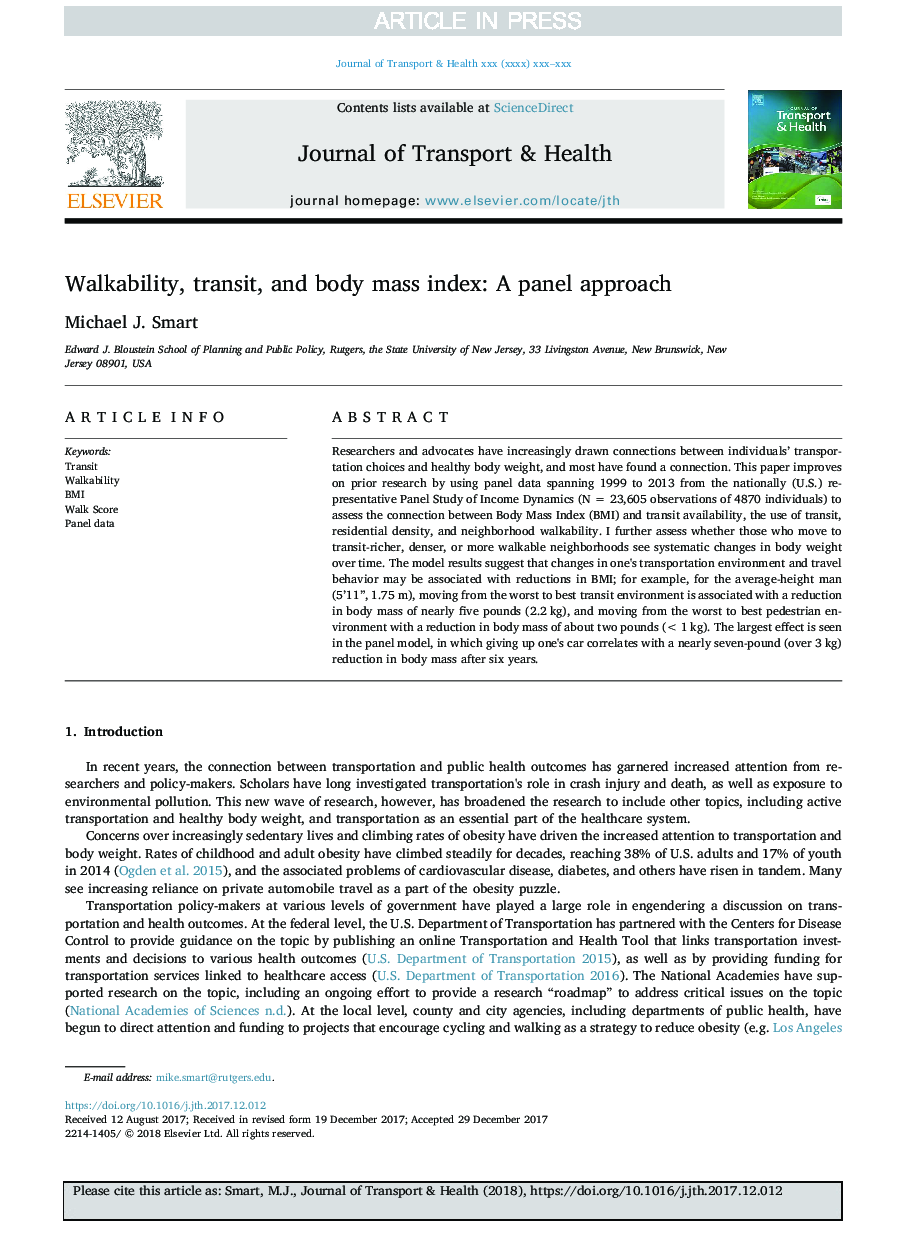| کد مقاله | کد نشریه | سال انتشار | مقاله انگلیسی | نسخه تمام متن |
|---|---|---|---|---|
| 7487121 | 1485451 | 2018 | 9 صفحه PDF | دانلود رایگان |
عنوان انگلیسی مقاله ISI
Walkability, transit, and body mass index: A panel approach
ترجمه فارسی عنوان
قابلیت پیاده روی، حمل و نقل و شاخص توده بدن: رویکرد پانل
دانلود مقاله + سفارش ترجمه
دانلود مقاله ISI انگلیسی
رایگان برای ایرانیان
موضوعات مرتبط
علوم پزشکی و سلامت
پزشکی و دندانپزشکی
سیاست های بهداشت و سلامت عمومی
چکیده انگلیسی
Researchers and advocates have increasingly drawn connections between individuals' transportation choices and healthy body weight, and most have found a connection. This paper improves on prior research by using panel data spanning 1999 to 2013 from the nationally (U.S.) representative Panel Study of Income Dynamics (N = 23,605 observations of 4870 individuals) to assess the connection between Body Mass Index (BMI) and transit availability, the use of transit, residential density, and neighborhood walkability. I further assess whether those who move to transit-richer, denser, or more walkable neighborhoods see systematic changes in body weight over time. The model results suggest that changes in one's transportation environment and travel behavior may be associated with reductions in BMI; for example, for the average-height man (5'11”, 1.75 m), moving from the worst to best transit environment is associated with a reduction in body mass of nearly five pounds (2.2Â kg), and moving from the worst to best pedestrian environment with a reduction in body mass of about two pounds (<1Â kg). The largest effect is seen in the panel model, in which giving up one's car correlates with a nearly seven-pound (over 3Â kg) reduction in body mass after six years.
ناشر
Database: Elsevier - ScienceDirect (ساینس دایرکت)
Journal: Journal of Transport & Health - Volume 8, March 2018, Pages 193-201
Journal: Journal of Transport & Health - Volume 8, March 2018, Pages 193-201
نویسندگان
Michael J. Smart,
